The 38 Best Films of 2022, So Far

[Editor’s note: This list was originally published on June 30, 2022. It was updated on October 6, 2022 to reflect new inclusions.]
Googly eyes. High-flying fighter jets. Terrifying aliens. Genies in bottles (and beyond). Lovable robots and wild red pandas. Medieval tweens. Meat (both human and otherwise, and so very much of it). Romance (forbidden, unexpected, edifying, and nurturing). Dancing. Incredibly bad vacations. Farts. Freedom (and, of course, restriction, and so very much of it). The first nine months (and change) of 2022 have already gifted film fans with a wide array of incredible cinematic offerings, and there’s still plenty of titles yet to arrive on a screen near you.
More from IndieWire
Some of our favorite filmmakers have returned to the cinema with fresh visions, including everyone from Kogonada to Andrea Arnold, David Cronenberg to Daniels, Terence Davies to Peter Strickland, Lena Dunham to George Miller. And there have been plenty of new names to admire, too, including Audrey Diwan, Panah Panahi, Mimi Cave, John Patton Ford, Owen Kline, Adamma Ebo, and Jerrod Carmichael, all of whom have bowed debuts that make us feel hopeful for the future of film.
A handful of the films that have already earned a mark of IndieWire distinction premiered on the festival circuit, some went straight to streaming platforms, and there’s even the odd blockbuster or two (good action movies, what a concept!) rounding out the lot. Best of all: each of these films is available to see right now.
Our list of the best movies of the year so far follows the same basic rules as it has in years past: In order to qualify, a film must have been released in North American theaters for at least a week or on a VOD platform or streaming service in the same territory. That means we’ve got the usual festival leftovers from last year that finally made their way to audiences, new titles from earlier festivals that have already been released, all alongside a handful of films that materialized in recent months. It also means that we can’t include movies we’ve already seen and adored that have yet to be released, even if they’re right around the corner, including a number of our favorites from the last run of fall festivals (rest assured, though, they’re coming).
For now, there’s plenty of good stuff to catch up on. Get watching!
Eric Kohn, Ryan Lattanzio, Jude Dry, Natalia Winkelman, Nicholas Barber, Vikram Murthi, Susannah Gruder, and Siddhant Adlakha contributed to this list.
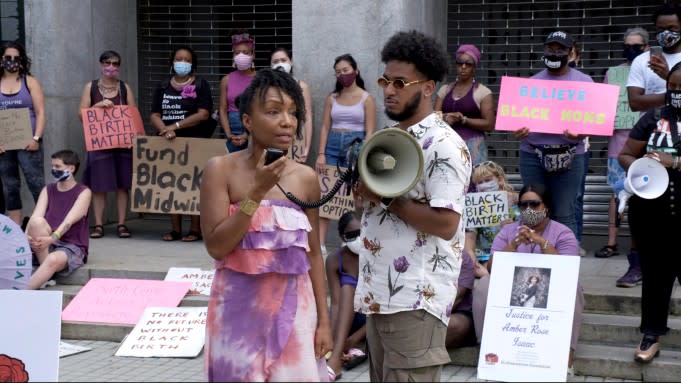
Hulu
“Aftershock” (Hulu)
The statistics speak for themselves: According to the CDC, Black and Native women are two to three times more likely to die from pregnancy-related causes than white women in this country. “Aftershock” is the result of tragedy, and the collaborative efforts of families who have endured the outcomes of systemic racial discrimination in reproductive health. The documentary from directors Paula Eiselt and Tonya Lewis Lee simultaneously gives a wide-angle and close-up look at the dangers of giving birth while Black, from the ways women’s healthcare has been taken out of their hands over time, to how this trend has impacted individual families who undergo the devastating experience of losing their respective partner, child, or mother in the blink of an eye, all due to preventable complications and medical neglect.
Despite its heartbreaking subject matter, what emerges is not only a portrait of grief, though it captures this painful mourning process with care and sensitivity. “Aftershock” is a powerful project inspired by loss, one that aims to move us closer to a world where all women, and especially Black women, are listened to and given the birthing experiences they deserve, so that we can one day begin to see an end to the abysmal statistics on maternal mortality in the United States. —SG
Read IndieWire’s full review of “Aftershock.”
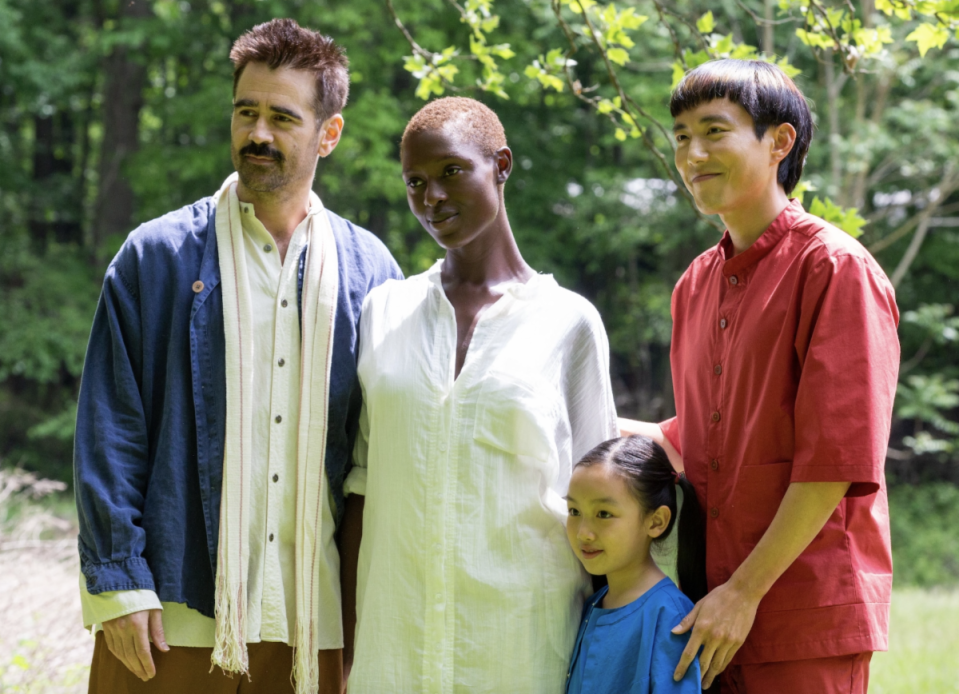
A24/Showtime
“After Yang” (A24)
At some unknown point in the near future, an android named Yang (Justin H. Min) stops working. Jake (Colin Farrell), the tea seller who bought the refurbished “technosapien” as a big sibling and cultural anchor for the young daughter he and his wife adopted from China, drags the uncannily lifelike machine down to the local tech center in much the same way someone might take a cracked iPhone to the Genius Bar, because that’s what you do when a piece of technology dies.
But replacing Yang’s role in Jake’s house won’t be as simple as buying a newer model. And when it seems clear that Yang may never come back online, Jake unexpectedly begins to mourn the robot’s loss in a very different way than one might grieve a broken toaster or a bricked laptop. There’s a little more to it than that, as filmmaker Kogonada digs some lovely rabbit holes of his own design and tunnels into soft pockets of memory only hinted at (if that) by the source material, yet this is still very much sci-fi at its coziest.
Perhaps there will come a day when Kogonada is compelled to scale up his delicate brand of cinema without breaking it — to replace pillow shots with cranes — but the wistful beauty of “After Yang” is as rooted in its domesticity as the tree that grows in the center of Jake’s house is rooted to the soil below. —DE
Read IndieWire’s full review of “After Yang.”
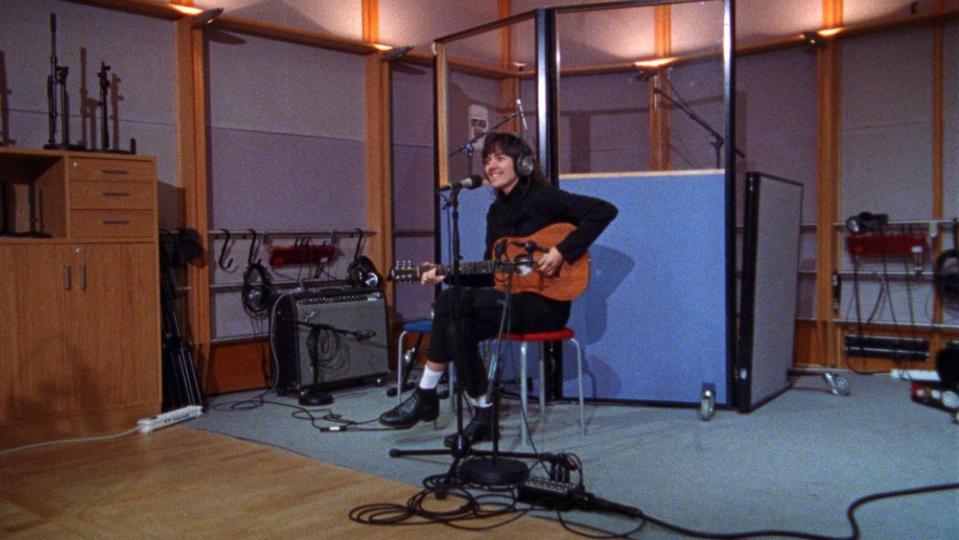
Oscilloscope
“Anonymous Club” (Oscilloscope)
Courtney Barnett stands alone in the middle of a recording studio in Oslo. A dressing room in Bloomington. A rooftop in Berlin. On stage, the Australian singer-songwriter commands attention, her propulsive energy and raspy croon animating everyone in the room as she bares her soul with songs like “I’m Not Your Mother, I’m Not Your Bitch.” It’s these in-between moments, however, that speak to Barnett’s genuine nature — a shy, oftentimes sad human being who leads a solitary life, and has difficulty opening up anywhere but in her lyrics.
All of these qualities and more are captured on striking 16mm in “Anonymous Club,” the first feature from music video director Danny Cohen. A frequent collaborator of Barnett, Cohen developed a friendship with the singer that inspired him to try his hand at documentary filmmaking. Familiar with her reticence as an interview subject, Cohen asked her to speak her mind into a dictaphone during a three-year period, much of it spent on an international tour. The film places these stream-of-consciousness half-thoughts, at once mundane and profound, but always sincere, over footage of the singer on the road and on stage, at home in Melbourne and in hotel rooms around the world, adding up to a unique, vivid picture of the Barnett’s inner and outer worlds. —SG
Read IndieWire’s full review of “Anonymous Club.”
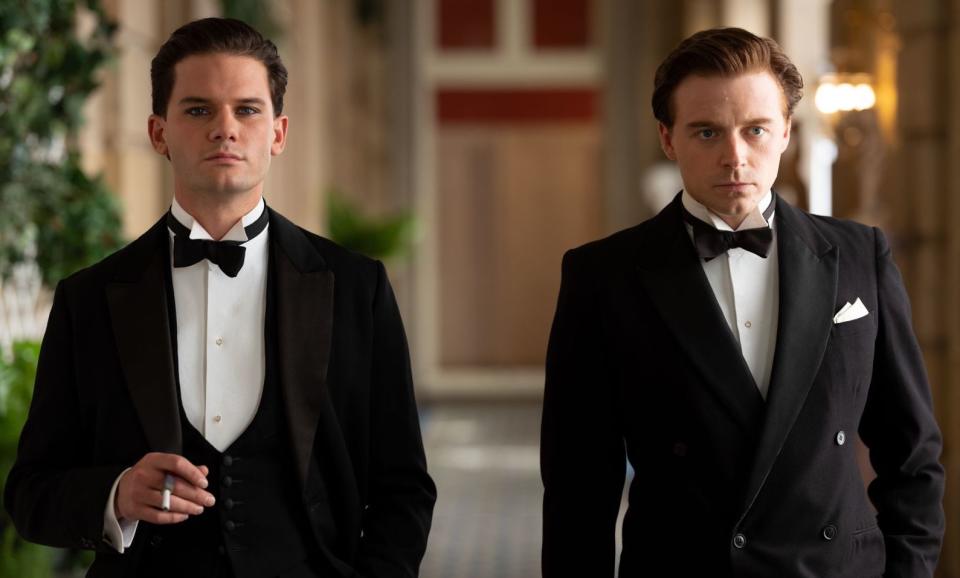
Roadside Attractions
“Benediction” (Roadside Attractions)
With “Benediction” — another spectacular and terribly sad biopic about a poet cursed with the ability to express a private agony they could never escape — Terence Davies has once again made a film that feels like the work of someone flaying their soul onscreen. Last time it was Emily Dickinson who provided the prism through which Davies could refract his own wants and wounds, and here it’s the English poet Siegfried Sassoon, an openly but resentfully gay man desperate for a peace of mind he only knew how to look for in other people. This is a film that trembles with a need for redemption that never comes, and the urgency of that search is palpable enough that you can feel it first-hand, even if “Benediction” is never particularly clear about the nature of the redemption it’s hoping to find.
We first meet Siegfried (played by Jack Lowden as a young man, and briefly by Peter Capaldi as an older one) as a bright-faced chap in London circa 1914, days before he’s sent to fight in the Great War that he will survive but never escape. The film is hardly a few minutes old before Siegfried has lost a brother, saved a number of men on the field of battle, and thrown the Military Cross he’s been awarded for his bravery into the River Mersey.
That bit of history turned out to be apocryphal, but hard proof exists of Sassoon’s blistering letter against the “political errors and insincerities for which the fighting men are being sacrificed,” a seismic anti-war screed published by the press and read aloud in the House of Commons. It was the start of his career as a writer, and an act of gallantry that shadowed the rest of a life spent in retreat. —DE
Read IndieWire’s full review of “Benediction.”

IFC Films
“Both Sides of the Blade” (IFC Films)
A white woman living in a post-colonial African country refuses to abandon her family’s coffee plantation even as civil war brews around her. A derelict spaceship full of criminals sails across the stars towards a black hole, adrift between their histories on Earth and the oblivion that awaits them in the cosmos. A former officer in the French Foreign Legion remembers his time stationed in Djibouti, where his men lost themselves in the desert (and each other) while preparing for a fight that never came.
The people in Claire Denis movies are seldom in a hurry, but they’re often out of time. They’re drawn and quartered between the soft flesh of memory and the acrid metal of waking life — pulled apart by an artist whose films are as fluid as memories, and yet also mesmerized by the violence of inflexible social constructs that separate people against each other and themselves. Her debut feature “Chocolat” (1988) ends with a Cameroon-raised white woman named France being told that a “horizon” cuts between now and then, white and Black, colonizer and colonized — invisible lines that are nevertheless impossible to pass. More than 30 years later, Denis is still haunted by the danger of those boundaries, and the self-immolating harm that can result when the mind lures people across borders the body isn’t allowed to cross. No wonder she couldn’t resist the appeal of making a COVID film. —DE
Read IndieWire’s full review of “Both Sides of the Blade.”

Alex Bailey/Prime Video
“Catherine Called Birdy” (Amazon Studios)
Who could have possibly anticipated that, nearly a decade ago when “Girls” creator and star Lena Dunham announced in an early episode of the ground-breaking HBO series that her Hannah Horvath might “be the voice of my generation. Or at least a voice. Of a generation” that she really meant that she was the voice of…medieval tweens?
Dunham’s fourth film adapts Karen Cushman’s lauded 1994 YA novel “Catherine, Called Birdy” (Dunham’s title does away with the comma, one of many smart changes she uses to freshen up the story) into a wildly entertaining coming-of-age comedy that captures both Dunham’s spirit and the thrust of Cushman’s novel. Starring “Games of Thrones” breakout Bella Ramsey in the title role, the film — set in medieval England — follows young Catherine (called “Birdy,” of course) as she navigates her way through a world uninterested (and unaccustomed) to caring about the whims and wishes of its women. —KE
Read IndieWire’s full review of “Catherine Called Birdy.”
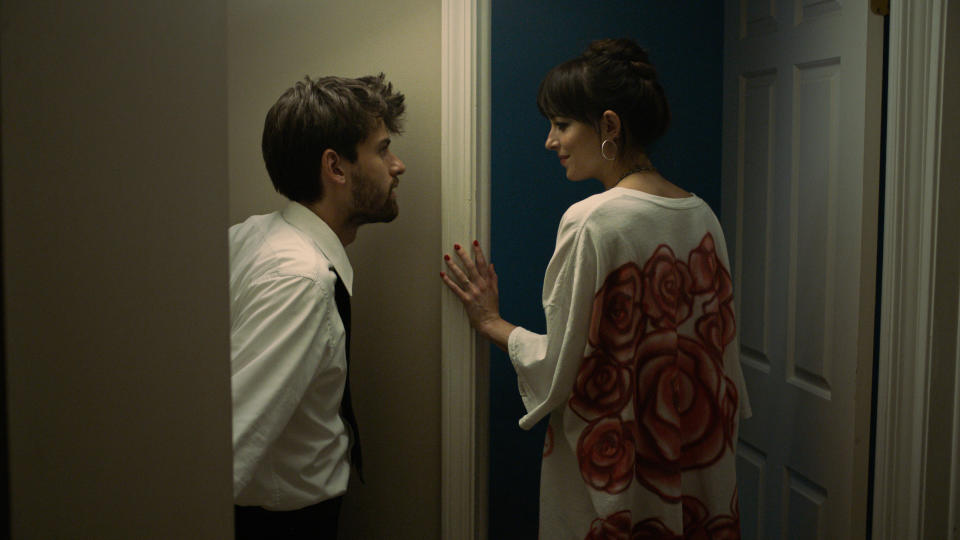
Apple
“Cha Cha Real Smooth” (Apple)
I suppose there are some people who might have an allergic reaction to the comfortably uncool movies of Cooper Raiff — some people who might stiffen up whenever his low-key indie charmers offer a supportive hug and remind you that we’re all just doing our best — but every life-sized beat of the 24-year-old’s first two features has struck me as wry and true in a way that makes the stories around them feel all the more honest for their empathy. If that would be a promising start under any circumstances, it’s an especially nifty magic trick at a time when the world is fucked to a degree that anything nice seems like it must be lying to you somehow.
Drawing from Richard Linklater and mentored by Jay Duplass, Raiff’s SXSW-winning “Shithouse” is the softest rom-com you’ll ever see about a homesick college freshman who can’t understand how the rest of his classmates are having such a good time, and yet it so warmly radiates the same vulnerability that was required to make it that even its broadest moments feel as raw as memories.
With his winsome sophomore effort “Cha Cha Real Smooth” — another effortlessly funny and endlessly forgiving mash note to anyone who’s struggled to reconcile the life they got with the one they imagined for themselves — Raiff scales up the disarming earnestness of his debut without losing any of its DIY intimacy. —DE
Read IndieWire’s full review of “Cha Cha Real Smooth.”

“Clara Sola” (Oscilloscope)
In some ways, Clara (Wendy Chinchilla Araya) is the most liberated woman in the verdant, remote, and deceptively matriarchal Costa Rican village where she works for God. A semi-feral 40-year-old who — legend has it — was once visited by the Virgin Mary, Clara has been molded into a faith healer by her ultra-religious mother (Flor María Vargas Chaves as Fresia), who’s successfully rebranded her daughter’s curved spine and childlike intellect as symptoms of divinity.
Aside from miracles on demand, little is expected of her. Clara is free to spend her days wandering through the forest, brushing her beloved white horse Yuca, and making adorable homes for the beetles she finds in the wild. She’s activated whenever someone with a few dollars to spare needs a leg healed or a cancer cured, but for the most part Clara is left to do as she pleases.
That is, as long as it doesn’t displease her mother. Fresia keeps her only surviving daughter on a tight leash, especially now that Clara’s sister — the jewel of her family — has ascended to heaven, leaving behind a bright-eyed daughter of her own (Ana Julia Porras Espinoza plays the teenage Mariá). Clara is treated like a young girl, even though she’s closer to menopause than puberty. Mariá bathes her and brushes her thick mane of black hair; Fresia chastises her for sticking her head out of the car window (“you’ll get sick”) and makes Clara spit out the stolen cloves she hides on her tongue. She rubs chili oil on her daughter’s fingers when the telenovelas they watch at night inspire Clara to rub her “touch-me-not.” —DE
Read IndieWire’s full review of “Clara Sola.”

Kino Lorber
“Costa Brava, Lebanon” (Kino Lorber)
The dystopian future, once a favored subject of science fiction, is quickly becoming the present. To use the devastatingly apt metaphor guiding Mounia Akl’s brilliant first feature “Costa Brava, Lebanon,” it’s dropping its shit on our doorstep. Visually ripe and darkly funny, “Costa Brava, Lebanon” strikes an expert balance between telling a good story while also grappling with the most pressing issues facing humanity. Energized by a charming ensemble of intimately compelling characters, its sharply focused metaphor never strays too far from the human element. Working with powerhouse performances from Oscar-nominated Lebanese filmmaker Nadine Labaki and Palestinian actor Saleh Bakri, Mounia Akl comes out swinging as the next big thing in Middle Eastern cinema.
The film tells the story of the Badri family, who live on a lush self-sufficient homestead on the outskirts of Beirut. Opening with a pointedly vague title card — “Lebanon, in a near future” — a newscast informs us that Beirut is in the midst of a waste crisis. It’s been happening since 2015, with ongoing protests over corruption and government inefficiency filling the city’s streets daily. On the Badri family compound, however, life is beautifully simple. —JD
Read IndieWire’s full review of “Costa Brava, Lebanon.”

IFC Films
“Cow” (IFC Films)
“Cow” opens with the closeup of a gooey calf yanked from the vaginal canal, and follows her all the way through her rough, solitary existence. The small miracle of director Andrea Arnold’s experiential documentary is that it enacts its simple premise in straightforward terms, but assembles them into a profound big picture.
Her subject, a dairy cow named Luma, grows up under the tutelage of farmers who seem, for all intents and purposes, looking out for her best interests. However, with Arnold centralizing her subject’s gaze, even their kindly background roles come into question. As Luma endures the monotony of her routine, “Cow” grows into a stirring, often sad contemplation of a life reduced to resources.
There’s a certain obvious performative quality to the gimmick of the movie, but that same ingredient makes it possible to settle into Arnold’s concept all the way through. It’s impossible to fully conceive of the world through the eyes of one animal, but “Cow” gets much closer than any anthropomorphized Disney character ever could, with the kind of sound and image deep dive that the term “pure cinema” was invented to describe. —EK
Read IndieWire’s full review of “Cow.”
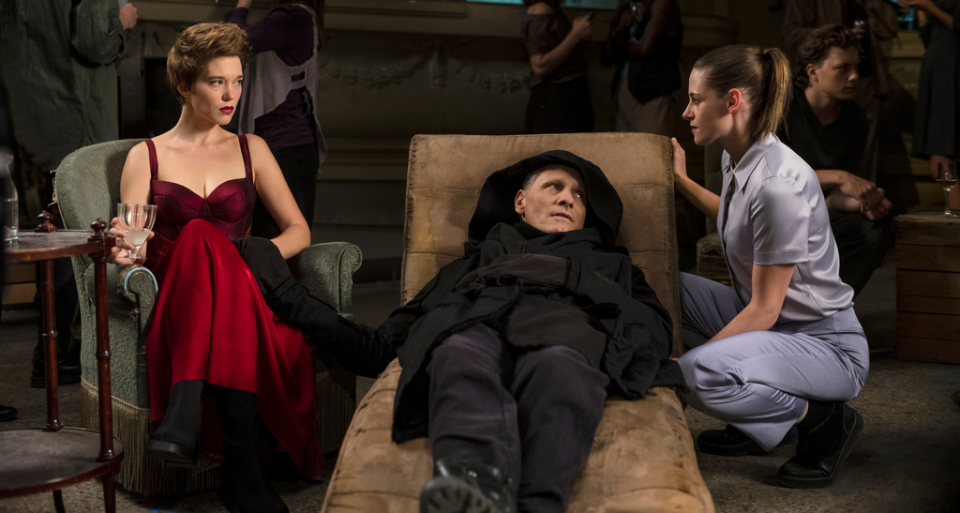
“Crimes of the Future” (Neon)
Whether you have the stomach to survive “Crimes of the Future” would seem to be a more complicated matter. At a time when holy shit, you have to see this insanity has become the fastest shortcut for arthouse fare to get around the always-suffocating layers of superhero movie hype, it was inevitable that David Cronenberg’s first movie since “Maps to the Stars” would be positioned as some kind of sick endurance test that found him revisiting the familiar preoccupations of body horror classics like “Dead Ringers” and “The Fly” so that he could combine all of their gnarliest moments into a career-spanning orgy of squelching latex. The tone of the press coverage leading up to the film’s Cannes premiere was basically “any upstart auteur can fuck a car, but only OG daddy Cronenberg can make love to it.” The director himself even suggested that people would start walking out within the first five minutes.
What Cronenberg neglected to specify is that those imagined audience members — as implausible as the crowds who supposedly fled in panic when the Lumière brothers aimed a train at them — would be stampeding up the aisles in response to tragedy, and not gore.
Don’t get me wrong, “Crimes of the Future” is Cronenberg to the core, complete with its fair share of authorial flourishes (the moaning organic bed that its characters sleep in is a five-alarm nightmare unto itself) and slogans (“surgery is the new sex”). At the same time, however, this hazy and weirdly hopeful meditation on the macro-relationship between organic life and synthetic matter ties into his more wholly satisfying gross-out classics because of how it pushes beyond them. —DE
Read IndieWire’s full review of “Crimes of the Future.”
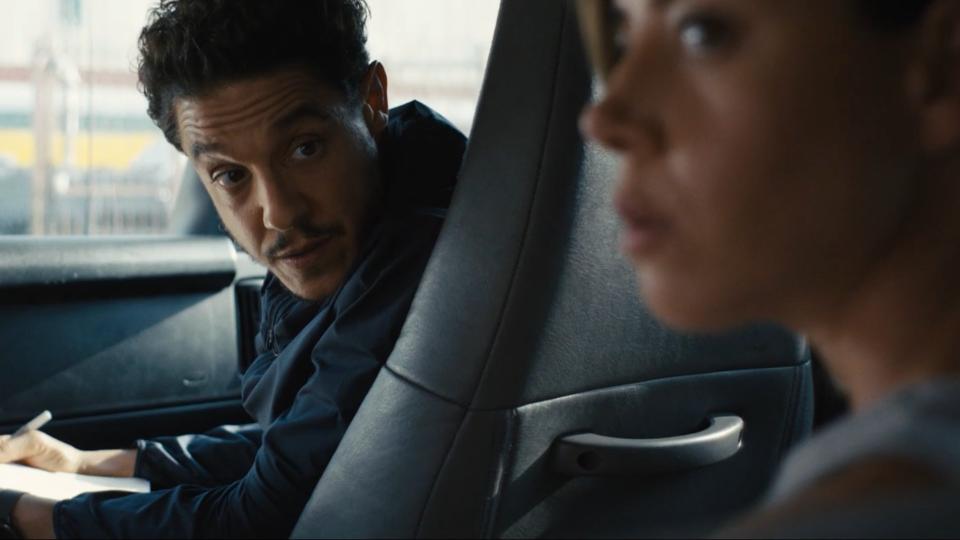
“Emily the Criminal” (Roadside Attractions)
On the occasion of their second meeting, Youcef (Theo Rossi) asks Emily (Aubrey Plaza) the question on everyone’s mind: “You can’t make money another way?” Emily, a one-time art student trapped in a series of dead-end jobs because of her criminal past and growing debt, is bruised and bleeding, breathless from pulling off a daring (and maybe even dumb) crime for Youcef, and can only fire back, “You can’t make another way?” Well, no, neither of them can, and in John Patton Ford’s tense and timely heist thriller, that realization pushes Plaza into her best performance yet.
As the eponymous antihero at the heart of Ford’s film — his feature debut after first earning accolades at Sundance over a decade ago for the lauded short “Patrol” — Plaza continues to build on her post-“Parks and Recreation” career with serious style. Thanks to turns in projects as varied as “Black Bear,” “Ingrid Goes West,” and “Happiest Season,” Plaza (who also produced Ford’s film, adding to a growing resume) has managed to turn her pitch-black sarcasm into something with real depth and nuance. You always know a Plaza performance will be good, but over the past few years, Plaza has seemed to make it a priority to surprise her audiences with just how good she is. —KE
Read IndieWire’s full review of “Emily the Criminal.”

Allyson Riggs, Courtesy of A24
“Everything Everywhere All at Once” (A24)
“Everything Everywhere All at Once” is as overstuffed as its title implies, even more juvenile than its pedigree suggests, and so creatively unbound from the minute it starts that it makes Daniels’ previous efforts seem like they were made with Bressonian restraint by comparison (for context, their last feature was a sweet fable starring Harry Potter as an explosively farting corpse).
It’s a movie that I saw twice just to make sure I hadn’t completely hallucinated it the first time around, and one that I will soon be seeing a third time for the same reason. I don’t ever expect to understand how it was (or got) made, but I already know that it works. And I know that it works because my impulse to pick on its imperfections and wonder how it might’ve been different eventually forfeits to the utter miracle of its existence.
It’s a movie… about a flustered Chinese-American woman trying to finish her taxes. Evelyn Wang (Michelle Yeoh) is being audited — first by the IRS, and then by the other great evils of our multiverse. She and her stubbornly guileless husband Waymond (Ke Huy Quan, a sublime revelation in one of his first major roles since the days of Short Round) immigrated to California in pursuit of happiness after Evelyn’s overbearing father, Gong Gong (James Hong, 93 years old and yet still in his prime) forbid the marriage, but their dreams of a brighter future were soon quashed by the realities of running a small business and raising a child of their own. —DE
Read IndieWire’s full review of “Everything Everywhere All at Once.”

Hulu
“Fire Island” (Searchlight Pictures)
Though Jane Austen only wrote one of them, there are actually a few truths universally acknowledged: That a single man in possession of a good fortune must be in want of a wife, and girls just wanna have fun. To the elite group of authors of pithy maxims, Jane Austen and Cyndi Lauper, we may add a third ingenious scribe: Joel Kim Booster.
The stand-up comedian makes a splashy debut as both a formidable literary force and an appealing leading man in “Fire Island,” his first feature film as screenwriter, and hopefully the first of many. Though the vision was all Booster’s, the love that went into “Fire Island” emanates from every player.
A true ensemble piece, the movie is filled with the joy and camaraderie of that cheesiest of queer epithets — chosen family. But under the Day-Glo sheen of the carless beach town filled with glistening shirtless queers, it all feels genuinely dreamy. (Or maybe it’s the Ketamine.) Directed by Andrew Ahn (“Spa Night,” “Driveways”) and starring “Saturday Night Live” darling Bowen Yang opposite Booster, “Fire Island” marries the promise of the queer comedy boom with the artistic arrival of Asian American cinema. Gorgeously intersectional, subtly political, and a damn good time — it’s a guaranteed instant classic. —JD
Read IndieWire’s full review of “Fire Island.”
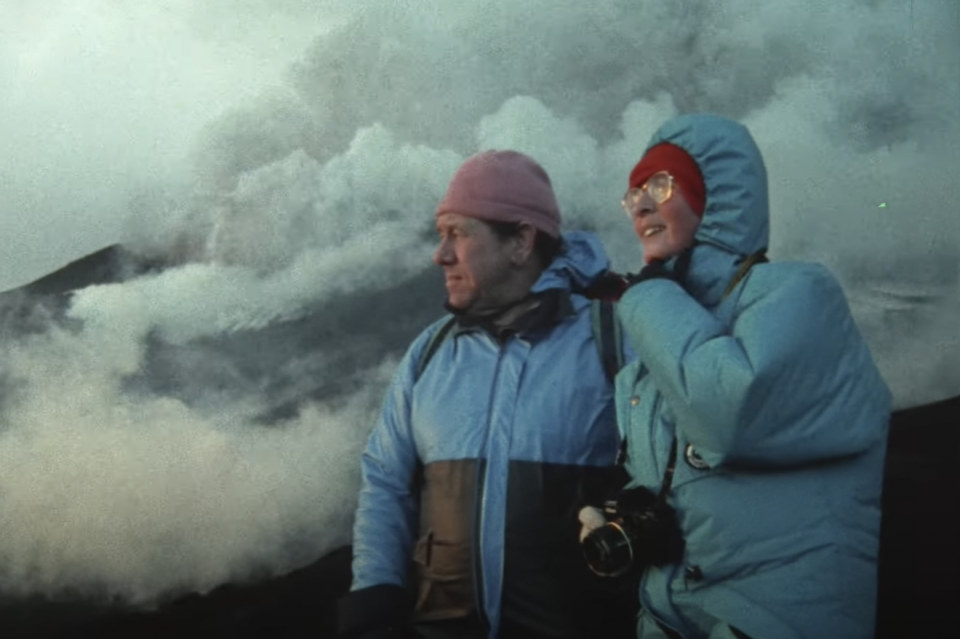
Neon
“Fire of Love” (Neon and NatGeo)
Sara Dosa’s “Fire of Love” is a documentarian’s dream. With a truly amazing trove of archival footage taken by married volcanologists Maurice and Katia Krafft, the movie is, seemingly, essentially handed to them. However, that surely didn’t make piecing together this vivid and soaringly heart-tugging documentary a simple task. The filmmakers have restored and re-assembled endless reels and dozens of hours of film and video footage dating back to the late 1960s into a witty portrait, aided amply by appropriately monotone and poetic narration from filmmaker Miranda July, and a soundtrack of go-to, let’s-run-toward-our-future pop classics like Brian Eno’s electronic anthem “The Big Ship.” At an economical 90-minute running time, “Fire of Love” packs a visual and emotional wallop, with enough close-ups on erupting volcanoes — one, at a point, is called “a bathtub with a hole in it, sowing death all around” — to leave you slack-jawed, terrified, and awe-inspired.
“Fire of Love” allows you to contemplate life lived at the edge of the abyss, at the precipice of spewing lava and 1200-degree Celsius heat. It’s that pyroclastic connection that brings together twin flames Katia (who calls herself the “bird”) and Maurice (him, the “elephant seal”), who met on a park bench in 1966, got married, and saved up enough cash to honeymoon in Stromboli, an island off the north coast of Sicily that’s home to three active volcanoes. Then they made a career out of their fascination, making their first big expedition to Mount Nyiragongo in the Congo, and gaining notoriety for often being the first at an active volcano. Two decades later, in 1991, they died unexpectedly, standing next to each other, amid an eruption on Mount Unzen in Japan, Maurice’s watch permanently stopped at 4:18 p.m. —RL
Read IndieWire’s full review of “Fire of Love.”

YouTube/screenshot
“Flux Gourmet” (IFC Films)
A student of vintage Euro-horror whose dreamy tales of killer dresses and kinky lepidopterists are sometimes filed away as the stuff of simple giallo fetishism (even by his fans), British filmmaker Peter Strickland may not be shy about his influences, but the echoes that reverberate throughout his work only tend to clarify the mesmeric power of his own voice. No matter how indebted to Dario Argento or Jess Franco his movies might be — no matter how removed from time these fables always are — the likes of “Berberian Sound Studio” and “In Fabric” are embossed with such palpable sensuality that they soon come to feel as singularly now and present as the touch of a velvet glove on your skin.
Sense is substance in Strickland’s films (we’re talking about a guy whose movies are so pungent that “The Duke of Burgundy” even includes a “perfumes by” credit in its opening sequence), and it was only a matter of time before he made one that you could practically taste.
A sweetly flatulent satire about the irritable relationship between art and decorum, “Flux Gourmet” flings us into another of the weirdo pocket worlds in which all of Strickland’s films take place. This one draws from ’70s fashion and ’80s haircuts to create a Lanthimos-like parallel universe where music is made with food (and food sometimes made from music), and kids dream about joining culinary collectives instead of becoming pop stars. —DE
Read IndieWire’s full review of “Flux Gourmet.”
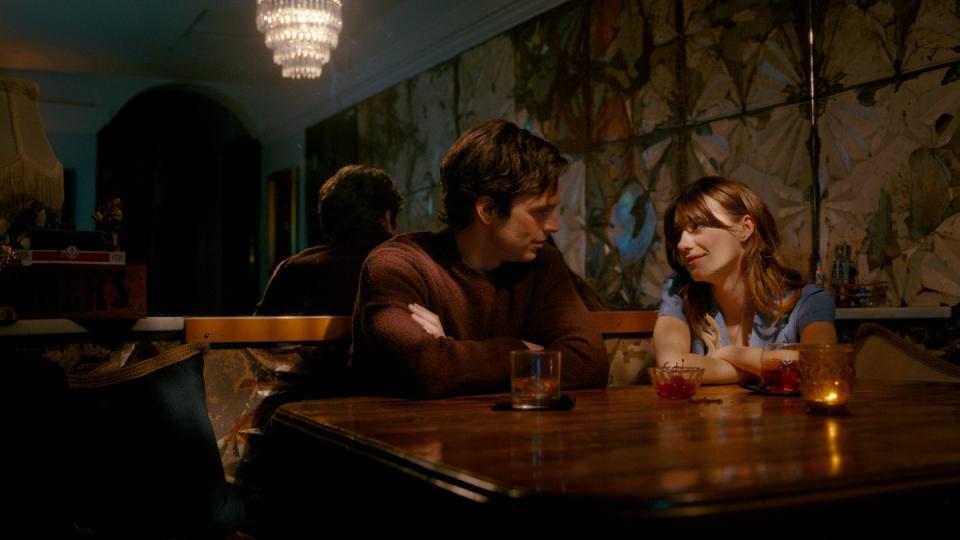
Searchlight Pictures
“Fresh” (Searchlight Pictures)
About thirty minutes into “Fresh,” a deliciously jangly horror movie, the opening credits roll. Up until then, the movie unfolds like an edgy romantic comedy. In the opening scene, Noa (Daisy Edgar-Jones, with a bite) shows up for an app date, which turns out to be a dud: A vain cheapskate who’s brusque with the waiter, the guy tells Noa between bites of their meal that her sweater looks shlumpy and a dress would suit her better. Reading the disagreeable signs, Noa bids him a polite goodbye, but not before Mr. Conceited Civility, upon rejection, can shout, “Good luck finding a guy, you stuck-up bitch.”
This sort of bait-and-switch becomes a key ingredient in “Fresh,” Mimi Cave’s classy and clever feature directorial debut. Written by Lauryn Kahn, the movie is framed as a parable of the anxieties of modern dating, of how truly impossible it can feel for (straight) women to catch a break. It’s a familiar setup, and one that’s vulnerable to the traps of heavy-handedness and cliche. But unlike recent predecessors — “Promising Young Woman” and the short story “Cat Person” come to mind — “Fresh” doesn’t wholly aspire to be a feminist arrow to the heart of today’s heterosexual dating scene. More so, it uses its central idea as fodder for stylish black comedy. Where “Promising Young Women” tended to feel labored and clumsy, “Fresh” is sleek and nimble, a worthy new entry into the feminist revenge thriller genre. —NW
Read IndieWire’s full review of “Fresh.”
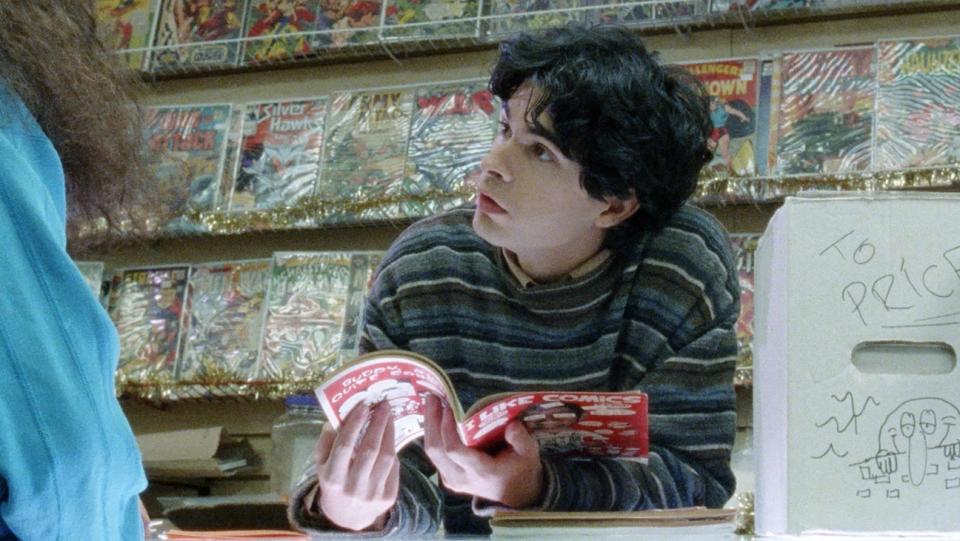
“Funny Pages” (A24)
Sheltered, creative adolescents tend to romanticize the fucked-up lives of their artistic heroes. Many of them believe it’s necessary to live like them in order to emulate their work. Raw truth, the stuff of art, doesn’t exist in public school hallways and nicely decorated living rooms. It lives “out there” where the “real people” live, with all their unsexy poverty and well-earned misery. This myth neatly frames a relatively safe home life as an oppositional force. If rebellion naturally demands having enemies, then there are no better ones for suburban white kids than a comfortable middle-class existence and supportive parents.
This is the epiphany Robert (Daniel Zolghadri), the budding cartoonist at the heart of Owen Kline’s debut feature “Funny Pages,” reaches when his art teacher and mentor Mr. Katano (Stephen Adly Guirgis) dies in a freak car accident. After getting arrested for breaking into his high school to steal back Katano’s work, and subsequently rejecting the legal counsel of a family friend in favor of a public defender’s services, Robert informs his frustrated parents (Maria Dizzia and Josh Pais) that he’s dropping out of high school. —VM
Read IndieWire’s full review of “Funny Pages.”
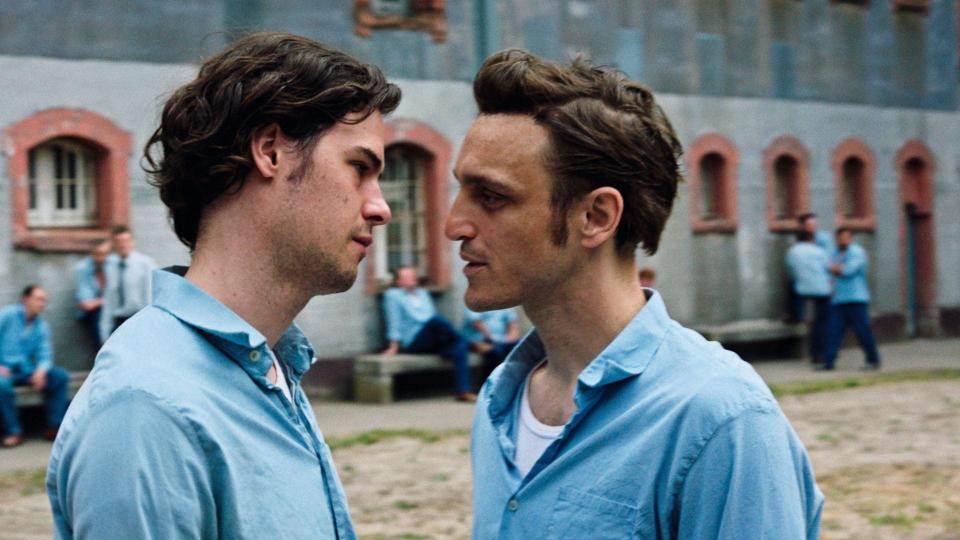
Mubi
“Great Freedom” (MUBI)
The last of the Nazi concentration camps were liberated in 1945, but not all of their survivors were freed. For many gay men born during the Weimar Republic — who had been disqualified from Hitler’s master race no matter their religion — the end of the Holocaust marked the beginning of another, longer sentence, as both sides of post-war Germany continued to enforce the criminalization of homosexuality under Paragraph 175 of the German Criminal Code (with West Germany adopting the Nazis’ aggressive revisions to the 1871 law).
Already hollowed and dehumanized by their suffering in the Shoah, these men were shuttled directly from Auschwitz or Dachau to prisons in Munich or Berlin without so much as a sniff of the new world order. As the rest of the planet spun forward into the second half of the 20st century, they remained shackled to a statute that belonged to the 19th.
That atemporality is at the heart of Sebastian Meise’s “Great Freedom,” a tough but powerfully tender prison epic that adopts a Tralfamadorian approach to its portrait of a repeat “offender” — a man who’s only free to express his natural love and desire while locked up in the same purgatory that was built to deny them both. The film thaws across three separate decades of a single life, melting through time like the errant memories that visit Hans Hoffmann (“Transit” star Franz Rogowski) in the darkness of the cell where he’s often sent for solitary confinement. —DE
Read IndieWire’s full review of “Great Freedom.”

Venice
“Happening” (IFC Films)
At many points in “Happening,” a weighty, naturalistic drama, Annie (Anamaria Vartolomei) opens her eyes wide. Her pupils shrink into tiny pinpoints. If she were a Marvel character, these would be the moments she transforms into her heroic alter-ego. But for Annie, a French literature student in 1963, power comes not from superhuman brawn but strength of will: She’s several weeks into an unwanted pregnancy, and though abortions are illegal — punishable with prison time — she’s determined to find a way to terminate it.
Not even a decade ago, a film this clear-eyed about abortion might have seemed groundbreaking, and in certain circles, controversial. But “Happening” arrives after “Never Rarely Sometimes Always,” “Unpregnant,” “Portrait of a Lady on Fire” (the magnificent Luàna Bajrami, who plays Sophie in that film, also appears in “Happening”), and even the first season of “Yellowjackets.” At this point, the jarring discomfort of watching young women punch their stomachs, bleed out on mattresses, or sterilize long, sharp utensils to insert into themselves has been somewhat blunted by its familiarity. Distress lingers, but we’ve been numbed to the shock. —NW
Read IndieWire’s full review of “Happening.”

Kino Lorber
“Hit the Road” (Kino Lorber)
A family road trip movie in which we never quite know where the film is heading (and are often lied to about why), “Hit the Road” may be set amid the winding desert highways and gorgeous emerald valleys of northwestern Iran, but Panah Panahi’s miraculous debut is fueled by the growing suspicion that its characters have taken a major detour away from our mortal coil at some point along the way. “Where are we?” the gray-haired mom (Pantea Panahiha) asks into the camera upon waking up from a restless catnap inside the SUV in which so much of this film takes place. “We’re dead,” squeaks the youngest of her two sons (Rayan Sarlak) from the back seat, the six-year-old boy already exuding some of the most anarchic movie kid energy this side of “The Tin Drum.”
They aren’t dead — at least not literally, even if the adorable stray dog who’s come along for the ride seems to be on its last legs — but the further Panahi’s foursome drives away from the lives they’ve left behind in Tehran, the more it begins to seem as if they’ve left behind life itself. A purgatorial fog rolls in as they climb towards the Turkish border, and with it comes a series of semi-competent guides (one amusingly trying to steer a motorbike from behind a sheepskin balaclava) who show up to give the family vague directions as if they were clueless interns for the ferryman on the river Styx. A cosmic pall starts to shadow every scene, the characters growing further and further away from us with every long shot until they’re (literally) sucked into the shimmering abyss of outer space. —DE
Read IndieWire’s full review of “Hit the Road.”
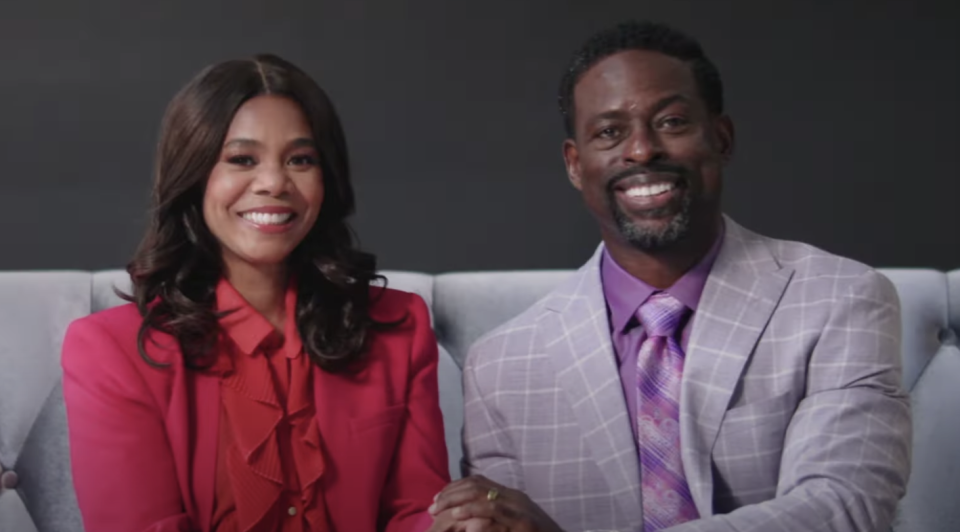
screenshot/Focus Features
“Honk for Jesus, Save Your Soul” (Focus Features)
Initially scanning as a “Best in Show”-esque mockumentary send-up of megachurch culture in the time of #MeToo, Adamma Ebo’s feature directorial debut “Honk for Jesus, Save Your Soul” steadily moves into darker territory, though all of it is in service to biting back at a target-rich environment ripe for onscreen ripping. Featuring stars Regina Hall and Sterling K. Brown doing predictably divine work (do these two performers know any other way?), “Honk for Jesus” is equal parts hilarious and painful, an incisive upbraiding of the sorts of people who should have long ago realized no one — especially nattily attired pastors — is above God.
Once top of the heap in their Georgia town, thanks to their thousands-strong Southern Baptist congregation at the snazzy Wander to Greater Pastures megachurch, Trinitie (Hall) and Lee-Curtis (Brown) are months deep into a scandal that’s nearly sunk them. Through amusingly crafted newscasts and fake archival footage, Ebo introduces the duo and their current lot in life — not great, but as Trinitie tells us, stone-faced, they’re ready to gnaw through any problems with the tenacity of a rat — and their plan to win it all back. —KE
Read IndieWire’s full review of “Honk for Jesus, Save Your Soul.”

Paramount Pictures
“Jackass Forever” (Paramount Pictures)
The joyous fourth movie in a death-defying franchise that continues to find the sweet spot between “Magic Mike XXL” and “Salò, the 120 Days of Sodom,” Jeff Tremaine’s “Jackass Forever” opens with a sequence that accurately sets the tone for the motion picture magic to come. As with all of the sketches that compose this plotless clip reel of brilliant American idiocy, you know that something foul and/or unfathomably painful is about to go down in the cheesy “Godzilla” parody that kicks things off — longtime “Jackass” fans might even be able to guess what it will be — but it still hits with a childlike wave of wonder and revulsion when you see it unfold. It’s no wonder that the film’s biggest laugh comes when someone reacts to a wildly elaborate prank by shouting, in all sincerity, “I knew that was gonna happen!”
In this case, the gag is that the kaiju terrorizing downtown New York is actually Chris Pontius’ flaccid penis (painted green and puppeteered on strings with on-screen help from “Being John Malkovich” director Spike Jonze), and the monster’s legs are played by his wrinkled balls, which groan in response to the miniature rockets fired at them by ringleader Johnny Knoxville and other members of the cast. This will not be the strangest torture inflicted upon Pontius’ junk during the film — a film in which it’s actually Steve-O who suffers the worst of the genital hijinx, thanks to a stunt that I memorialized in my notes as “Candyman’s dick” — but it anticipates a work of art in which nostalgia and shock go as well together as old friends and pig ejaculate. Sometimes there’s so much beauty in the world I feel like I can’t take it. —DE
Read IndieWire’s full review of “Jackass Forever.”

“Lingui, The Sacred Bonds” (MUBI)
Mahamat-Saleh Haroun’s slender yet riveting “Lingui, the Sacred Bonds” is a story about a woman trying to secure an abortion for her 15-year-old daughter in a country where terminating a pregnancy violates both national and religious laws, but — as its title suggests in two different languages — this soft hammer of a social drama is less concerned with the cruelties of Chad’s politics than it is with how people help each other to endure them together.
“Lingui” is a Chadian term that represents a tradition of altruism; a collective resilience in the face of catastrophic ordeals. When a group of young men wordlessly pull the teenage Maria (Rihane Khalil-Alio) out from a riverbed after she tries to drown herself, that is lingui. When Maria’s mother Amina (Achouackh Abakar Soulymane) agrees to aid her estranged sister at a moment of irrevocable crisis, that is lingui. When Maria’s school, afraid of how gossip might reflect on them, expels the girl the minute they learn of her delicate condition… that is why lingui is so necessary. —DE
Read IndieWire’s full review of “Lingui, The Sacred Bonds.”

A24
“Marcel the Shell with Shoes On” (A24)
According to general wisdom, it takes 20 beings to form a real community. When Dean Fleischer Camp’s charming “Marcel the Shell with Shoes On” feature-length film opens, the anthropomorphic seashell (voiced by Jenny Slate) has long been without such a population, instead whiling his days away alongside his sassy grandmother and a rotating cast of mostly disinterested AirBNB guests. Like the trio of early short films Camp and Slate crafted around the stop-motion shell in the early aughts (plus a pair of best-selling storybooks), “Marcel the Shell with Shoes On” adopts a breezy mockumentary style to tell the tale of the world’s most charming shell.
This time, however, the duo (plus newbie partner Nick Paley, who wrote it alongside Camp and Slate) dig deeper into Marcel’s seemingly everyday life to unearth the usual tender feelings (he’s a tween shell! with shoes! he’s adorable!), plus a slew of insights that speak to far deeper emotions and ideas. In a time beset with films consumed by questions of connection, community, and change, “Marcel the Shell” seamlessly marries big ideas with charm and humor (and inventive stop-motion work to boot). In short, it’s the cutest film about familial grief you’ll see all year, perhaps ever. —KE
Read IndieWire’s full review of “Marcel the Shell with Shoes On.”
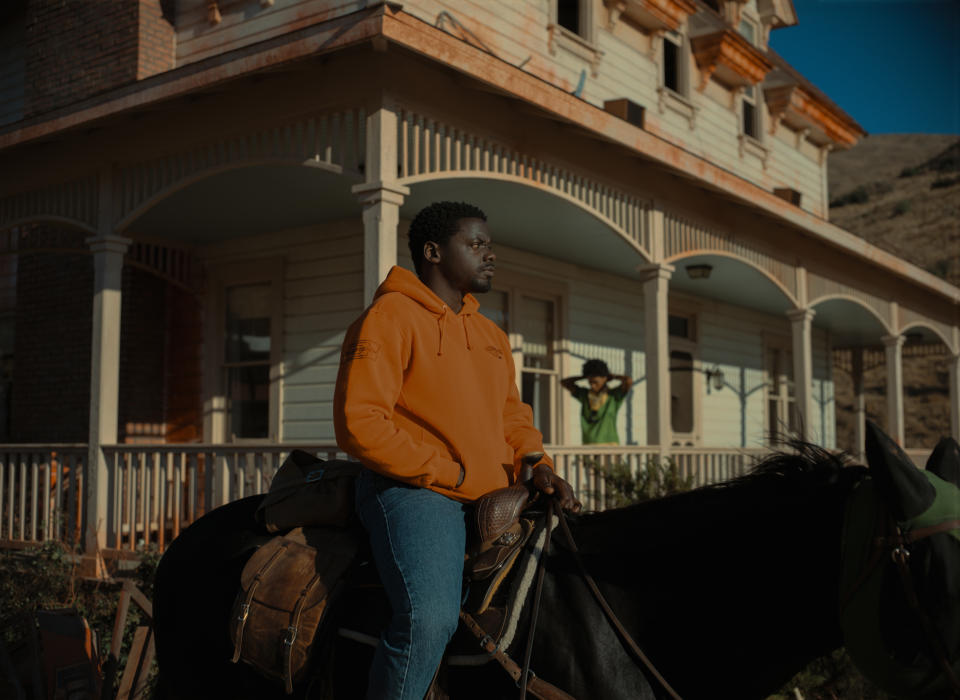
Universal Pictures
“Nope” (Universal Pictures)
How do we live with some of the shit that we’ve been forced to watch on a daily basis? Why are we so eager to immortalize the worst images that our world is capable of producing, and what kind of awful power do we lend such tragedies by sanctifying them into spectacles that can play out over and over again?
While Jordan Peele has fast become one of the most relevant and profitable of modern American filmmakers, “Nope” is the first time that he’s been afforded a budget fit for a true blockbuster spectacle, and that’s exactly what he’s created with it. But if this smart, muscular, and massively entertaining flying saucer freak-out is such an old school delight that it starts with a shout-out to early cinema pioneer Eadweard Muybridge (before paying homage to more direct influences like “Close Encounters of the Third Kind”), it’s also a thoroughly modern popcorn movie for and about viewers who’ve been inundated with — and addicted to — 21st century visions of real-life terror.
The only sci-fi movie that might scare and delight Guy Debord and Ed Wood to the same degree, “Nope” offers a giddy throwback to the days of little green men and hubcap U.F.O.s that hopes to revitalize those classic tropes for audiences who’ve seen too much bloodshed on their own screens to believe in Hollywood’s “bad miracles.” It’s a tractor beam of a movie pointed at people who’ve watched 9/11 happen so many times on network TV that it’s lost any literal meaning; who’ve scrolled past body cam snuff films in between Dril tweets; who’ve become accustomed to rubbernecking at American life from inside the wreckage. —DE
Read IndieWire’s full review of “Nope.”

Aidan Monaghan / Focus Features
“The Northman” (Focus Features)
All you really need to know about “The Northman” — a $90 million Viking revenge saga directed by Robert Eggers — is that every single minute of it feels like a $90 million Viking revenge saga directed by Robert Eggers. Both parts of that equation are worth celebrating outside of and in addition to the movie’s other merits.
Even if “The Northman” had been a dreadful bore — and not a primal, sinewy, gnarly-as-fuck 10th century action epic that starts with a hallucinogenic Viking bar mitzvah, features Björk’s first narrative film performance since “Dancer in the Dark,” and ends with two mostly naked men fighting to the death atop an erupting volcano — the simple fact that financiers had the chutzpah to bankroll such a big swing in the face of our blockbuster-or-bust theatrical climate would have felt like a (pyrrhic) victory against the forces of corporate homogenization, no matter who was behind the camera.
That “The Northman” was entrusted to a fetishistically uncompromising young auteur whose previous movie was a single-location sea shanty best-remembered for mermaid vaginas and Willem Dafoe asking, “Why’d you spill your beans!?” makes it even riskier to slot into multiplexes between “Sonic 2” and “MCU 28.” That the finished product viscerally feels like the work of the same artist — despite well-documented attempts to water it down — makes it something of a miracle. —DE
Read IndieWire’s full review of “The Northman.”

Hulu
“Not Okay” (Searchlight Pictures)
“CONTENT WARNING: This film contains flashing lights, themes of trauma, and an unlikable female protagonist.”
That’s the opening salvo for Quinn Shephard’s “Not Okay,” a razor-sharp, painfully funny (and, sometimes, just plain painful) social satire about the ills of internet notoriety. It’s a canny opening for the “Blame” filmmaker’s whipsmart sophomore outing, winking at the familiar concerns (content warnings, trauma) of the generation she chronicles while, nodding at the woman at its heart (hey, it’s an “unlikable” female lead!) and hinting at growth within (she is, after all, a protagonist, not an antagonist). Being perpetually online sucks, but movies about it don’t have to, as “Not Okay” shows time and again.
Danni Sanders (Zoey Deutch) wants to be noticed, so badly, but while she lives in an age that makes it hard to hide, she’s still woefully ill-equipped for what that really means. And, as the film’s in media res opening makes clear, Danni has already a) taken her shot and b) flamed out in spectacular fashion. Sobbing, alone, and mortified, we meet Danni as she’s paging through reams of tweets and videos and news articles that declare her a social-media monster, the worst of the worst, and very canceled indeed. —KE
Read IndieWire’s full review of “Not Okay.”

YouTube/screenshot
“On the Count of Three” (United Artists)
Jerrod Carmichael’s “On the Count of Three” isn’t super heavy on the kind of koan-like quips that have always lent his confrontational standup comedy its velvet punch, but this one — delivered in the opening minutes of his suicide-dark but violently sweet directorial debut — resonates loud enough to echo throughout the rest of the film: “When you’re a kid they tell you the worst thing in life is to be a quitter. Why? Quitting’s amazing. It just means you get to stop doing something you hate.”
Lifelong best friends Val (Carmichael) and Kevin (Christopher Abbott) are both ready to give up. The first time we see them they’re standing in the parking lot outside an upstate New York strip club at 10:30 a.m. with handguns pointed at each other’s heads as part of a double-suicide pact. Nobody’s laughing, but you can already feel the love between them; something about the look in their eyes reads more like “sisters who are pregnant at the same time” than it does “strangers who are about to shoot each other in the face.” —DE
Read IndieWire’s full review of “On the Count of Three.”

Sundance
“The Princess” (HBO)
There are no talking heads in “The Princess.” There are no graphs or charts or diagrams or maps. There are no chyrons to tell us dates or names or places. There are plenty of voices, all of them nameless, all of them freely allowed to share their thoughts on a person they (likely) never met. There is plenty of video, some of it shot by everyday people, some by professional news organizations, some of it by paparazzi. People wink and smile and scream, gasp and yell and point fingers. “Is that her?” they whisper. It’s surely someone important, they say. And there: It is her. Princess Diana. And also, somehow, even as we watch her walk across the screen or play with her kids or grimace through a press conference or ever-so-slightly move her chaise lounge away from prying pap eyes, it’s not her. Not at all.
Ed Perkins’ remarkable documentary “The Princess” eschews many of the trappings we’ve come to associate with the modern documentary — again, there are no talking heads in the film, no little bits of snazzy knowledge, nothing to contextualize it beyond our own broad knowledge of the dearly departed princess — and Perkins instead relies on a wealth of contemporaneous archival footage to weave his story. The effect is, at first, jarring: The film opens inside a car as a group of friends wheel around Paris at night. The footage predates things like iPhones and Instagram and TikTok, but the effect is the same, an immediacy to the material that feels a bit too personal. As they zip through the city, they alight on The Ritz, beset by paparazzi and lookie-loos and just people everywhere. Is that her at the center of it all? —KE
Read IndieWire’s full review of “The Princess.”
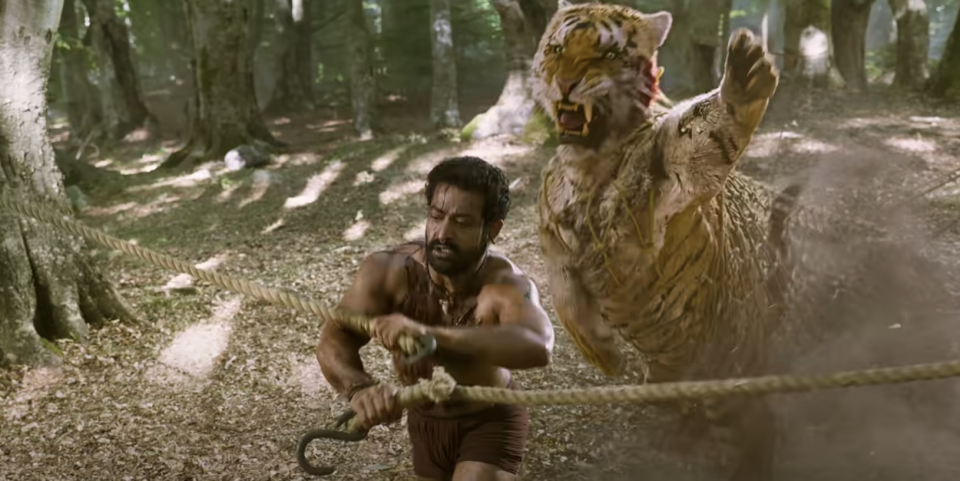
DVV Entertainment
“RRR” (DVV Entertainment)
S.S. Rajamouli’s “RRR” is a dazzling work of historical fiction — emphasis on the “fiction” — that makes the moving image feel intimate and enormous all at once. A pulsating period action drama, it outshines even the director’s record-smashing “Baahubali” movies (viewers familiar with them probably won’t know what to expect here) thanks to its mix of naked sincerity, unapologetic machismo, and balls-to-the-wall action craftsmanship. Plenty of recent releases have been hailed as “the return of cinema” post-pandemic, but “RRR” stands apart as an unabashed return to everything that makes the cinematic experience great, all at once.
To talk about the film in any meaningful sense — especially for unfamiliar viewers — first requires setting the stage. Its title is a backronym that stands for “Rise, Roar, Revolt” in English (and similar phrases in various other Indian languages), a fitting label for its early 20th century story about a pair of Indian anti-colonial revolutionaries. However, “RRR” started out as the film’s working title. It stood for director Rajamouli, and the film’s two renowned Tollywood stars, Ram Charan and N.T. Rama Rao Jr. (or N.T.R. Jr.), whose first on-screen collaboration is a good enough reason for many people to buy tickets. The title stuck. The high-caliber names involved are the main attraction, something that becomes all too clear when each actor first appears, and adoring fans turn darkened multiplex screens into lively spaces of celebration, whose walls echo with hoots, hollers and wolf whistles.
The film is worth this reaction, too. —SA
Read IndieWire’s full review of “RRR.”
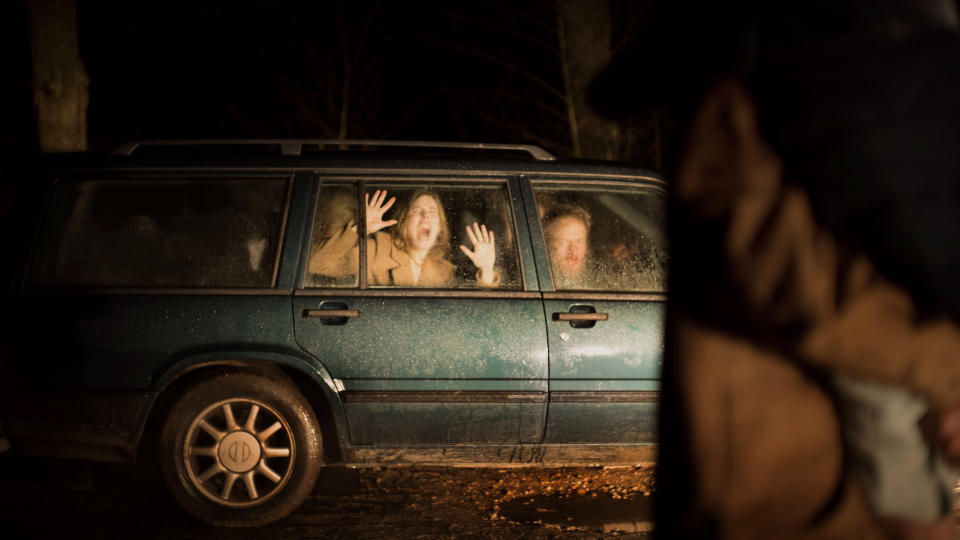
IFC Films/Shudder
“Speak No Evil” (IFC Midnight)
There are some horror films that rattle you to the core, that make you scream and cover your eyes, your heart beating out of your chest until you feel faint and slightly nauseous. And there are some that sink deep into your bones and stay there, unsettling your psyche and coloring nearly every subsequent event you experience with an overpowering sense of dread. “Speak No Evil,” the latest film from Danish director Christian Tafdrup, is both of these, a masterly work of sadistic and painstakingly drawn-out social horror that sits with you long afterward, like the dull ache from a deeply lodged splinter.
It almost feels wrong to recommend this film to others — why would I inflict this inhumane experience on someone else? I’ll leave audiences with a warning, one that should lure in the kind of viewer who sees the value in the brilliant brutality of such a work. And for those willing to take the plunge, the pay-off is enormous: “Speak No Evil” is the most cunningly depraved horror film in years, offering a piercing commentary on the ways we accommodate others to the point of self-subjugation. —SG
Read IndieWire’s full review of “Speak No Evil.”

Sundance
“The Territory” (NatGeo)
In Alex Pritz’s “The Territory” — a documentary made in close collaboration with Brazil’s dwindling Uru-eu-wau-wau tribe — the moving image is truth, truth is power, and picking up a camera is an act of reclamation. Set at the explosive intersection of technology, politics, and indigenous persecution, the film is gorgeously and sometimes ingeniously conceived, painting an intimate first-hand portrait of joy, pain, and community, before bursting with rip-roaring intensity as it captures a high-stakes struggle for survival unfolding in the moment. More than just a chronicle of events, however, it’s also a bold statement about the lens through which indigenous peoples are often brought to the silver screen.
Right from the get-go, Pritz skirts the conventions of the documentary, a form defined in the public consciousness by its most banal and straightforward examples. He introduces the story not through interviewed voices and faces, but through the harsh sound design of Peter Albrechtsen, who captures the Amazon rainforest being culled by machines, and through measured, tightly-controlled closeups of the gloved hands responsible. A propulsive electronic score by Katya Mihailova both envelops and intrigues. —SA
Read IndieWire’s full review of “The Territory.”
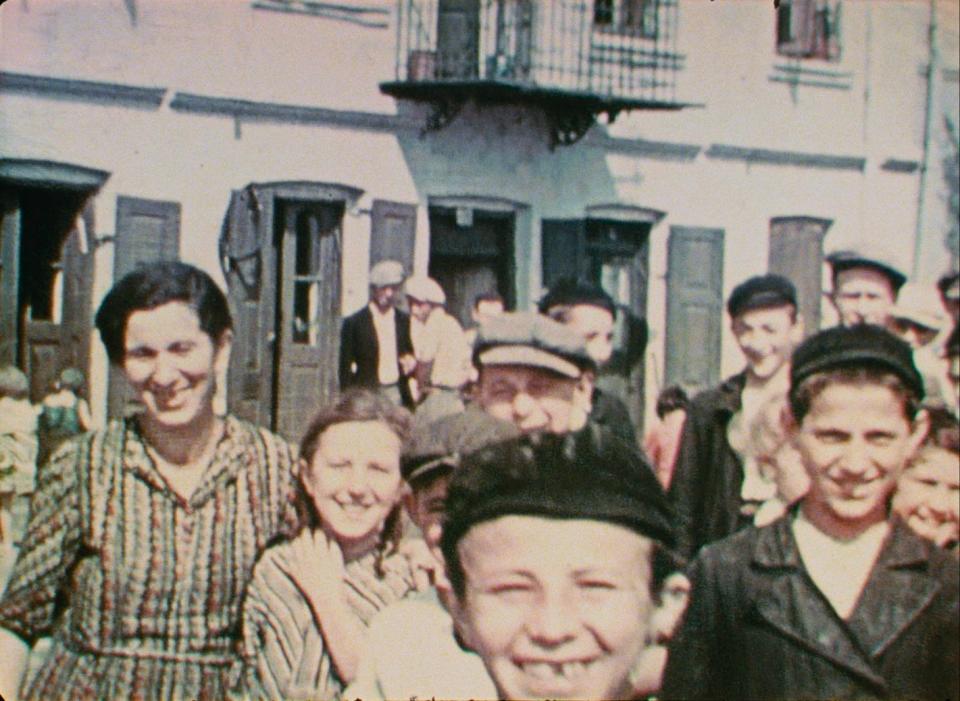
“Three Minutes — A Lengthening” (Super LTD)
After its pizzicato opening theme, “Three Minutes — A Lengthening” goes quiet for a little bit while showing the three minutes of footage referred to in the title. The only noise on the soundtrack is the whir of a projector, and the only images on the screen are taken from an amateur holiday film shot in a European town in the first half of the 20th century. Some of it is in black and white, some of it has pale colors. There are tree-lined cobbled streets, and apartment blocks with shutters and iron balconies. People wave and smile at the camera, jostling to stay in shot, apparently hypnotized by the novel technology before them. They all seem healthy, reasonably well off, and fundamentally ordinary. And that’s it. The footage comes to an end.
But Bianca Stigter, the Dutch director of “Three Minutes,” doesn’t move onto another set of images. For the remaining hour of her documentary essay, she replays the same fragments over and over, freeze-framing, rewinding, zooming in on particular faces, items of clothing, and architectural details. It should seem repetitive, but it grips the attention from start to finish. —NB
Read IndieWire’s full review of “Three Minutes — A Lengthening.”
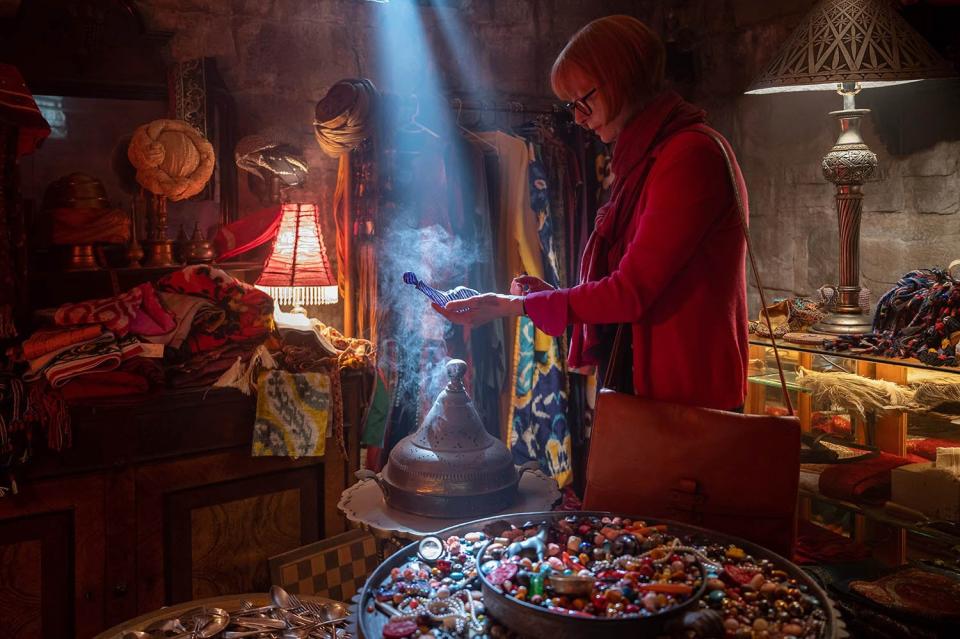
MGM
“Three Thousand Years of Longing” (MGM)
A bittersweet modern fairy tale from one of cinema’s most bombastic virtuosos, George Miller’s “Three Thousand Years of Longing” might have some reservations about the 21st century — the movie often wrestles with the impact that science and technology might have on our ancient sense of wonder — but at the bottom of this tightly bottled epic sits a question that should resonate especially hard with people who have spent too many of the last 3,000 days stuck inside their homes with nothing but “content” to keep them company: Are stories enough to satisfy our lives?
Acclaimed narratologist Dr. Alithea Binnie (Tilda Swinton, as if “acclaimed narratologist Dr. Alithea Binnie” could possibly be played by anyone else), would like to think so. Once upon a time she was married to a handsome academic, but when that schmuck left her for someone younger, she learned to make peace with her solitude. Being on her own — no partners, no parents, no children — affords a brilliant mind like hers the freedom it needs to flourish (read: travel the planet giving Powerpoint presentations about how the myths once used to contain all of the world’s mystery have so little value that they can now be contained by comic books). —DE
Read IndieWire’s full review of “Three Thousand Years of Longing.”

Paramount Pictures
“Top Gun: Maverick” (Paramount Pictures)
It’s become an increasingly self-evident truth that Tom Cruise is the last Hollywood movie star of his kind — short as ever but still larger-than-life in an age where most famous actors are only as big as their action figures — and the new “Top Gun” isn’t exactly subtle about the self-commentary it offers on that situation. From new recruits to grizzled vets, every character in this film regards Maverick as both a relic and a god (sometimes in the same breath). Even the guy’s on-again off-again love interest, a thinly written bar owner who Jennifer Connelly wills into a flesh-and-blood woman, thinks of him as an old flame whose light has never gone out.
Watching Cruise pilot a fighter jet 200 feet above the floor of Death Valley, corkscrew another one through Washington’s Cascade Mountains, and give one of the most vulnerable performances of his career while sustaining so many G-forces that you can practically see him going Clear in real-time, you realize — more lucidly than ever before — that this wild-eyed lunatic makes movies like his life depends on it. Because it does, and not for the first time.
But if “Maverick” can’t quite match “Mission: Impossible — Fallout” for sheer kineticism and well-orchestrated awe, this long-delayed sequel does more to clarify what that means than anything Cruise has ever made. And the reason for that is simple: Tom Cruise is Maverick, and Maverick is Tom Cruise. —DE
Read IndieWire’s full review of “Top Gun: Maverick.”

PIXAR
“Turning Red” (Disney)
Thirteen-year-old Mei Lee has big problems long before she unexpectedly turns into a giant, walking, talking red panda. She wants to hang out with her friends, drool over their favorite boy band (4*Town, though there are, inexplicably, five members), have some laughs, just be a kid. But at home, she has to be someone else, buttoned up and proper, a perfect student and a doting daughter, not just some screeching teen (and what were teens best made for, other than screeching?). Being a teenager is tough enough, weird beyond measure, confusing as anything, and then…giant, walking, talking red panda. What’s a girl (panda) to do?
Pixar has never shied away from the tough stuff — there are entire generations of kids who have being guided through the cold terror of nothing less than death, world-wide destruction, and even the afterlife through the animation giant’s charming productions — but Domee Shi’s instant classic “Turning Red” marks the first time Pixar has gone all-in on perhaps the scariest, funniest, weirdest thing of all: puberty. —KE
Read IndieWire’s full review of “Turning Red.”
“Vengeance” (Focus Features)

Patti Perret/Focus Features
At the risk of damning an impressively strong debut with faint praise, B.J. Novak’s “Vengeance” is perhaps the best possible movie someone could make out of a murder-mystery that starts with John Mayer standing on the rooftop bar of a Soho House (where he’s waxing philosophical about the pointlessness of monogamy in a world so fractured that people have been reduced to mere concepts, like “Becky Gym,” “Sarah Airplane Bathroom,” or any of the actual names he’s assigned to the scores of semi-anonymous women in his phone), but doesn’t end with the musician dead in a ditch somewhere.
In fact, Mayer never shows up again. He sticks around just long enough for you to assume the worst about what’s to come — oh yay, the other, other guy from “The Office” remade “Swingers” for the Tinder set, and cast someone who once referred to his dick as a white supremacist in the Vince Vaughn role — and then recedes into the background of a wickedly sharp film that satirizes our rush to judgment in a society where unprecedented chaos has forced people to rely on the stabilizing confidence of their own convictions. —DE
Read IndieWire’s full review of “Vengeance.”
Best of IndieWire
New Movies: Release Calendar for October 7, Plus Where to Watch the Latest Films
Martin Scorsese's Favorite Movies: 50 Films the Director Wants You to See
Sign up for Indiewire's Newsletter. For the latest news, follow us on Facebook, Twitter, and Instagram.

 generic
generic 